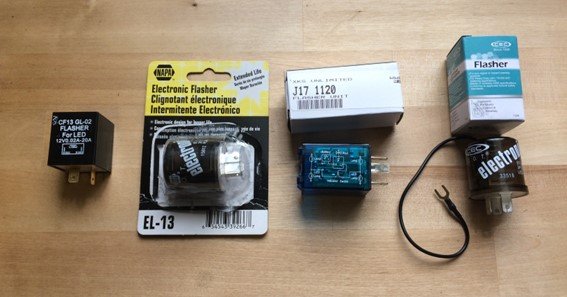When working with automotive electrical components, particularly in turn signal or hazard light systems, you might come across a relay flasher marked with the abbreviation “EF.” Understanding what “EF” means is crucial for diagnosing electrical issues or installing a new relay flasher. In this blog, we’ll explore what “EF” stands for in the context of relay flashers and how it relates to your vehicle’s electrical system.
What Does “EF” Mean on a Relay Flasher?
1. EF: Electronic Flasher
“EF” typically stands for Electronic Flasher. Relay flashers are designed to control the flashing of turn signals or hazard lights in a vehicle. Unlike older thermal flashers, which rely on the heating and cooling of a bimetallic strip to create the flashing effect, electronic flashers use solid-state electronics for more precise control of the flashing rate. These electronic components are generally more reliable and provide consistent performance, regardless of the load on the circuit.
2. How Electronic Flashers Work
Electronic flashers operate by using transistors or other electronic components to switch the circuit on and off at a regulated interval, creating the flashing effect. This type of flasher is less affected by factors like ambient temperature or the number of bulbs in the circuit, providing a stable flashing rate that complies with road safety standards.
Why Use an Electronic Flasher?
Electronic flashers are often used when upgrading to LED bulbs, which draw less current than traditional incandescent bulbs. Thermal flashers rely on the amount of current flowing through the circuit, and low-current LED bulbs may not produce enough heat to trigger the flash. Electronic flashers solve this issue by providing consistent performance regardless of the current draw.
FAQ
- What is the purpose of a relay flasher in a vehicle?
- A relay flasher controls the flashing of turn signals and hazard lights by regulating the electrical current that flows to these lights.
- Why are electronic flashers better for LED bulbs?
- LED bulbs draw less current than traditional incandescent bulbs, and electronic flashers can provide consistent flashing without relying on the current draw to function.
- Can I replace a thermal flasher with an electronic one?
- Yes, many vehicles can be upgraded from thermal to electronic flashers, especially when switching to LED lighting.
- What causes a relay flasher to fail?
- A relay flasher can fail due to electrical overloads, moisture exposure, or simply aging components, causing the turn signals or hazard lights to stop functioning properly.
- How do I know if my vehicle uses an electronic flasher?
- Check the markings on the flasher unit itself. If it is labeled with “EF,” it is likely an electronic flasher. You can also consult your vehicle’s manual for detailed information.










